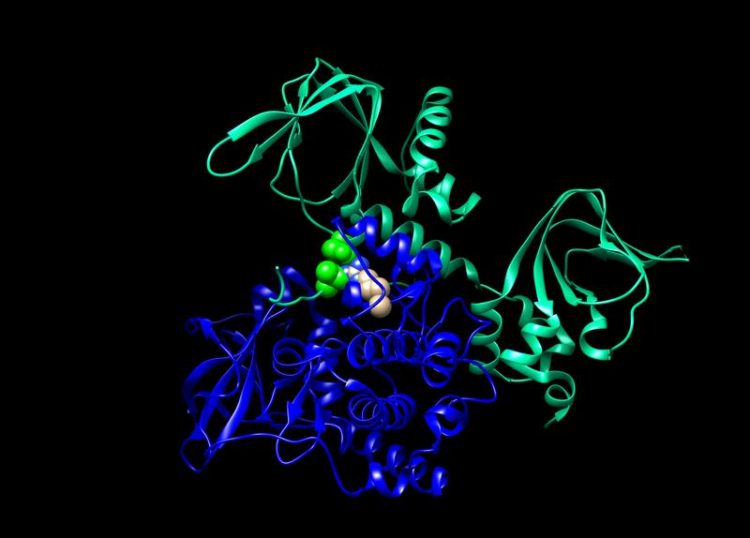A genetic basis for cortisol excess

Cortisol is a hormone that is produced by the adrenal gland in response to stressful events, and modulates a whole spectrum of physiological processes. An international research collaboration has now identified genetic mutations that lead to the production and secretion of cortisol in the absence of an underlying stressor.
The discovery emerged from the genetic characterization of benign tumors of the adrenal gland which produce cortisol in excess amounts. Patients who develop such tumors suffer from weight gain, muscle wasting, osteoporosis, diabetes and hypertension. This condition, known as Cushing’s syndrome, can be successfully treated by surgical removal of the affected adrenal gland.
Overproduction of cortisol
The team, which included researchers from Germany, France and the US and was led by Professors Felix Beuschlein and Martin Fassnacht of the LMU Medical Center, were able to show that in one-third of a patient population with such adrenal tumors, a mutation in the gene for the enzyme phosphokinase A was specifically associated with the continuous production of cortisol. This mutation had occurred in the adrenal gland and is therefore restricted to the tumor cells. The results have just appeared in the prestigious “New England Journal of Medicine”.
“The gene for phosphokinase A plays a key role in the regulation of adrenal gland function, and the newly identified mutation causes it to become irreversibly activated, which results in the unrestrained production of cortisol,” says Felix Beuschlein. In collaboration with a group at the US National Institutes of Health, the team was also able to identify patients who carry similar genetic alterations in their germline DNA. In these families, Cushing’s syndrome occurs as a heritable genetic disease.
The elucidation of the genetic mechanism responsible for a significant fraction of cases of Cushing’s syndrome provides a new diagnostic tool, and may also lead to new approaches to treatment. To enable further investigations towards this end, the German Cushing Register, which is maintained by Professor Martin Reincke at the LMU Medical Center, has received a grant of 400,000 euros from the Else Kröner-Fresenius Foundation. A recently initiated European research consortium devoted to the study of Cushing’s syndrome, of which Professors Beuschlein and Fassnacht are members is supported by a grant of 700,000 euros from the ERA-NET program administered by the Federal Ministry for Education and Research. (The New England Journal of Medicine, 26. Februar 2014) nh
Media Contact
All latest news from the category: Life Sciences and Chemistry
Articles and reports from the Life Sciences and chemistry area deal with applied and basic research into modern biology, chemistry and human medicine.
Valuable information can be found on a range of life sciences fields including bacteriology, biochemistry, bionics, bioinformatics, biophysics, biotechnology, genetics, geobotany, human biology, marine biology, microbiology, molecular biology, cellular biology, zoology, bioinorganic chemistry, microchemistry and environmental chemistry.
Newest articles

Superradiant atoms could push the boundaries of how precisely time can be measured
Superradiant atoms can help us measure time more precisely than ever. In a new study, researchers from the University of Copenhagen present a new method for measuring the time interval,…

Ion thermoelectric conversion devices for near room temperature
The electrode sheet of the thermoelectric device consists of ionic hydrogel, which is sandwiched between the electrodes to form, and the Prussian blue on the electrode undergoes a redox reaction…

Zap Energy achieves 37-million-degree temperatures in a compact device
New publication reports record electron temperatures for a small-scale, sheared-flow-stabilized Z-pinch fusion device. In the nine decades since humans first produced fusion reactions, only a few fusion technologies have demonstrated…





















